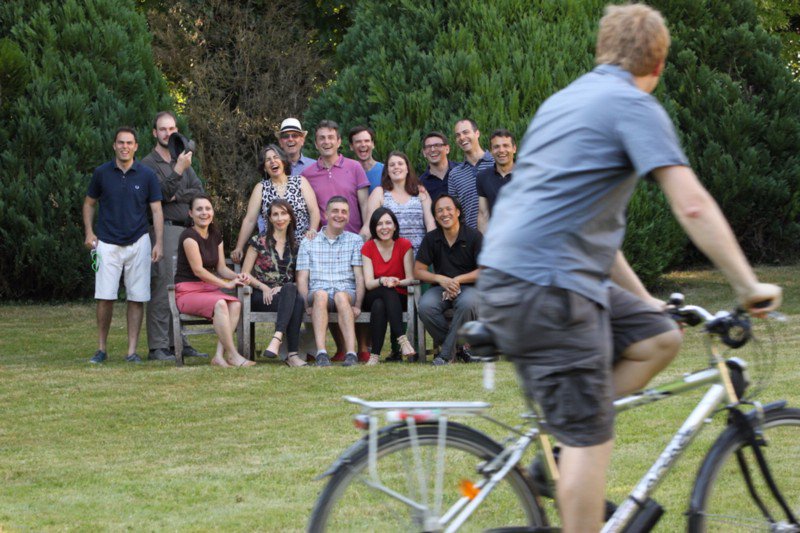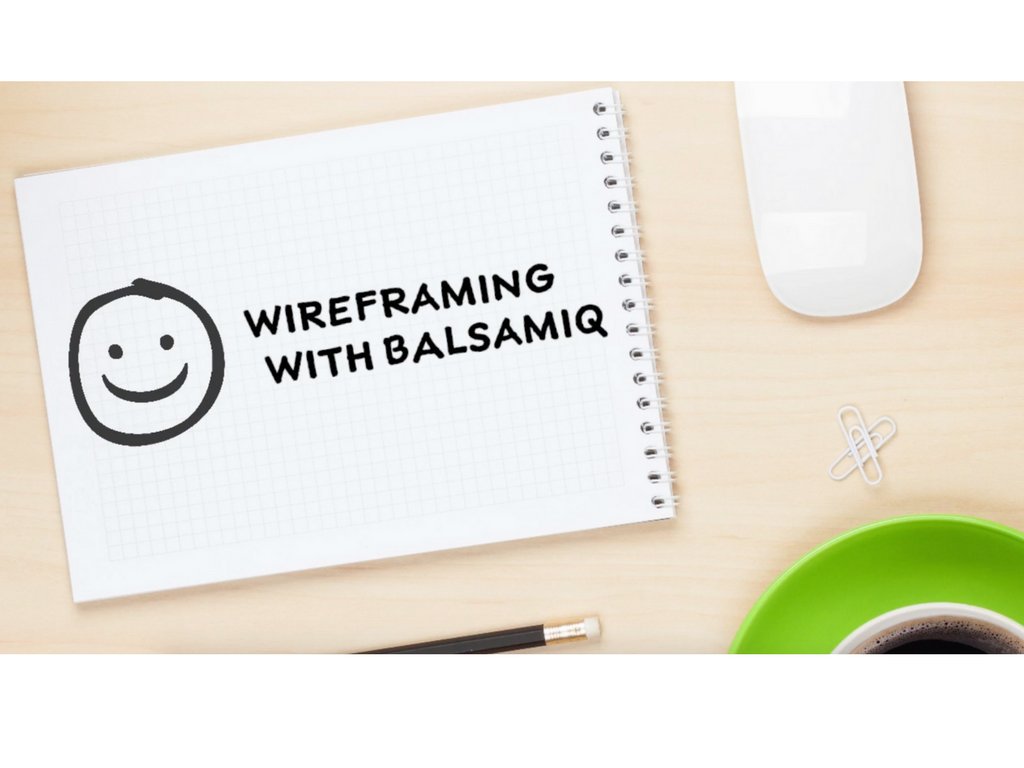The Future of Design Tools

An interview with Balsamiq founder Peldi
Here is the first article of our blog series on the evolution of web & mobile development. To start our series we wanted to tackle the question of design, and in particular what we should expect from design tools in the future.
Who better than Giacomo Guilizzoni aka Peldi to discuss the evolution of design tools. Peldi is the founder of Balsamiq, the famous wireframing tool, and one of the pioneers of the design tools market. Balsamiq will celebrate its 10 years in business this year and has become the leader of the wireframing market. This is also the reason why we decided to develop a feature dedicated to Balsamiq design files within Yotako.
Peldi kindly took the time to share with us his feelings about the past decade and the things we should expect from Balsamiq and the design tools market in the years to come. Now let’s give him the floor...

Balsamiq recently reached a new milestone with half a million customers using the software. How would you describe your typical customer?
Balsamiq is useful for several types of people.
First, there is definitely a big chunk of UX designers using Balsamiq as part of their toolset along with Axure, Adobe Photoshop, Sketch or Invision. They represent about a third of our customers.
They usually use Balsamiq for the wireframing phase for themselves or to make sure that clients understand that wireframes are just wireframes and not the final product.
Then we have a lot of founders, entrepreneurs and product managers. Basically people who have to act as a designer. They generally don’t have a UX designer in-house so they have to start all by themselves. Balsamiq is very useful for them because it’s a very easy tool compared to complex prototyping tools. Such profiles account for around a third of our users as well.
Finally, the last third of our user base is composed of developers and people working in web or development agencies. They use Balsamiq to communicate with their clients in order to gather better requirements so there is less risk of feature creep later down the line. They tend to use our tool at the beginning of each project.
We noticed you guys recently dropped the word “Mockups” in Balsamiq to replace it by “Wireframes”, could you tell us more on your strategy here?
Honestly Balsamiq Mockups was the wrong name for our tool. I have a developer background and I’m not a professional designer so when I founded the company I chose the name mockups because this is how we used to call wireframes at my previous job (note: at Adobe).
The term "mockup" refers to something different than what we provide with Balsamiq which is actually wireframe. Mockups are usually designs with higher fidelity, like things you do in Sketch or Photoshop. Recently we decided to pull the trigger and change the name to Balsamiq Wireframes. It made sense to do it right now as a lot of things are happening in the design tools market at the moment. So that’s a good way to clearly state once for all what Balsamiq is about. We are almost a decade old and we wanted to get prepared for the next decade the right way, it’s kind of a restart for our company.
If you were about to start Balsamiq today instead of 2008 what would you do differently?
We actually change all the time, it’s one of the reasons why we are still in business after 10 years. If I had to start Balsamiq today, first I will call it Balsamiq Wireframes. I would take more time doing research before jumping in. Balsamiq was my first company and I have learned a lot about running a business since the beginning. If I could learn from my mistakes I wouldn’t build the software in Flash, we just spent the last couple of years rewriting the all app because of that. But in general if I had to start now and Balsamiq already existed I wouldn’t want to compete with them!
You are one of the pioneers in the design software business, how do you see the recent rise of new design tools out there?
In my opinion the recent rise in design tools is due to a few reasons.
First, Adobe tools are old. They are 20 years old, and for any piece of software lasting that long is amazing. There is now nothing else they could possibly add to their software. The last updates they added to Photoshop were basically magic features. They are now adding artificial intelligence because there is nothing else they could possibly add. The drawback of being complete is that you necessarily become complicated to use. That’s why Sketch came out and started over doing the same thing Illustrator used to do at the beginning. They did a marvellous job and their timing was right so people adopted it quickly.
The second reason why we see the emergence of so many new tools is the recent focus on the prototyping market. In the past, Adobe only used to care for businesses that were over a hundred million $ a year in revenue, otherwise it wasn’t worth for them. They have lowered that number since as they realized that their core customer base of designers was leaving them. They decided to go after the prototyping market because it was kind of stale. There was Axure, that is also kind of old, so they said: “let’s take that market over” and decided to build Adobe XD. And did a fantastic job with it, it’s a wonderful tool.
"Competing on features is very 90’s, now people compete on UX."
Then Invision came out because of a similar situation. Online commenting tools have existed for a long time but there wasn’t a clear leader in the market. They got a lot of funding to go for all of that market, probably with the hope to sell to Adobe at some point, who knows... All these companies were riding the wave of user experience becoming a major design trend. Competing on features is very 90’s, now people compete on UX. All tools have the same kind of features but some are fun to use and others are not. People understand the importance of UX in good design so the market is growing fast.
What it means for Balsamiq is that we need to be more explicit on our positioning. We have to make it more clear that we are a wireframing tool and not a prototyping tool, and that’s also why we decided to change the name to Balsamiq. I think they is plenty of room for everybody in this growing market and we are pretty happy to be in the wireframing space and not trying to compete with these giant players for prototyping tools.
How do you see the improvements of Balsamiq UX in the future?
What we have today is good. Our customers know we have a good product but there are always things that need to be improved so we always keep working on it. There is nothing major left to do for the product other than for example bringing it to tablets. We are now working on notifications and project history for the cloud version. We think the product is finally near the perfect product for what it has to do. After 10 years of improvement it better be! We are excited to keep going and respond to our customers needs, just like we have always been doing so far.
How did you manage the switch from desktop to cloud in the last decade?
When I started I only wanted to do plugins for Confluence and Jira. But that didn’t last long: even during our beta people wanted a desktop version that became Balsamiq Mockups. Four months after launch, people asked for a cloud version and I used to answer no, basically because I was all by myself and I wanted to be able to sleep at night. I didn’t want to stay awake to keep the servers up. But people kept on asking and pushing for that so after several years we finally did a cloud version that we called myBalsamiq (now called Balsamiq Cloud).
Today our users are slowly migrating from the desktop version to our cloud version. I think that today the cloud is the best way to work for a software, way better than desktop. But in 2008 it wasn’t the case, people were in love with desktop app and the web just wasn’t ready. At that time, browsers could not do what desktop could. But things have changed, we now see the cloud as our N°1 product in the future.

In a fully remote team like Balsamiq, what software do you use to organize and collaborate?
We use Slack with different channels, with our own guidelines on how to use them, Dropbox to share files, Google Drive for some documents, Altassian Confluence as a wiki and our handbook and Github.
We work that way now but we constantly improve the way we work and our processes. We don’t meet everyday, we are too big for that and we actually never did that. We don’t like meetings that much, we work more in a Basecamp way. We do a meeting together only once a month to do demos and status updates.
(Note: If you are interested to learn more about how Balsamiq manages to stay flat in a growing team, have a look at this video of Peldi presenting Balsamiq company culture: “Everything Changes At 25”).
How do you see the future of wireframing practice evolving in the next years?
I don’t think it is going to change much. Checkboxes and radio buttons have been there for 20 years now and it’s very unlikely that a completely new paradigm will show up. What’s new right now is augmented reality, virtual reality and conversational UI. These innovations impact the way we design. There is for example no standards on how 3D models should be manipulated.
Regarding conversational UI, it raises the question: how to design for something that doesn’t have a UI. Because even if you use AskGoogle or Siri the answer is always visual. It talks back to you but you keep on looking at the visual result, it’s not much different than a visual interface. To those who think that voice will replace UI, I usually point out that a big chunk of our brain is dedicated to visual processing. And this is not going to change anytime soon. We are visual animals and there will always be a need for user interfaces.
But I still think these innovations are niches and will remain niches for a long time. So what’s going to change: the tools are going to improve making the process faster, more efficient and more fun to use. I guess we will also have new tools to choose from, which is great.
Who do you admire the most in the design space?
I admire all designers. I’m a designer wannabe. I designed Balsamiq but I never get any proper training on design so I usually put real designers on a pedestal.
"I put designers on a pedestal."
I’ve learned a ton from Alan Cooper. “About Face” is the book that really sparked my passion for UI. I also admire Louis Rosenfeld, Jared Spool and Luke Wroblewski, all the classics!
You used to describe your company as “A cozy restaurant on the Web”. What are you guys cooking today?
We still describe ourselves that way, we really have that feeling. Looking at my screen I can tell you that our ongoing projects are email notification and the project history/revision feature for cloud. We are also building a new version of our Google Drive add on so it can be purchased for teams instead of individually. Those are the major things that we are doing. And these are all things that come directly from our customers.
Another important project we have is education. Instead of just providing a tool to do wireframes we also want to teach people how to do it well. We will soon write a course on wireframing with a new section on our website dedicated to that.

What’s the last book you have read?
I stopped reading books for a long time because I didn’t had time for it. But now, as a good sign of the maturity of the business, I have time again. Right now I’m reading this book called Americanah from Chimamanda Ngozi Adichie. It's an extremely well written novel, I recommend it.
As your slogan says “Life is too short for bad software” so is there a piece of software you would like to recommend us?
I would say Spectacle. It’s a tool for Mac I started using a few months ago and I couldn’t live without it now. It adds keyboard shortcuts to move and resize your windows. In my job I have to compare stuffs all the time so Spectacle helps me to save precious seconds everyday. It’s my favorite kind of software, completely invisible but it helps you to be productive.
My favorite software used to be Spotify, which completely changed the way we consume music. 1password was also revolutionary when it came out. Once in a while you have fantastic piece of software that comes out like that.
Thanks a lot to Peldi for sharing his passion with the Yotako community!
If you are a Balsamiq user you can have a look at this blog post on how to convert your Balsamiq file into code.
If you are interested in what we do at Yotako, don’t hesitate to join the community on Twitter and Facebook!
Happy coding!
The team at Yotako


